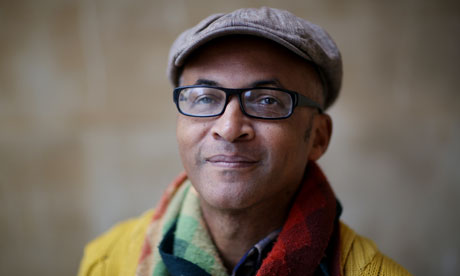
Colin Grant's father's name was Clinton. To his friends he was known as "Bageye", on account of his baggy eyes. To his wife Blossom, however, he was "Satan". In the 1950s he had migrated from Jamaica to Luton, finding work as a machinist at Vauxhall Motors, and lording over his family like an autocrat. That he moonlighted as a cabdriver ferrying around knock-off gear was the least of his crimes. He rarely cracked a joke or showed any tenderness to his children, squandered his salary on rum and poker, and wasn't shy when it came to raining blows on Blossom.
This should be grist to the mill of the contemporary misery-memoirist. But Colin Grant, whose previous books – Negro With a Hat, about Marcus Garvey, and I &I about the reggae band the Wailers – were sober, elegantly written biographies of charismatic figures in the African diasporic pantheon, is anything but a purveyor of soapy navel-gazing. He is clipped rather than effusive, hinting at rather than wallowing in acts of emotional or physical violence. His father, though self-regarding, has the aspirational pathos of a character from VS Naipaul's early fictions.
Bageye at the Wheel is set in 1972, and it's easy to imagine it being adapted for TV, with establishing shots of striking workers, troops in Ireland and the slain athletes at the Olympic village in Munich. A different though equally cartoonish treatment would revel in cheesy footage of roller skates, teenagers in flares and glam-rock musicians on Top of the Pops. Well-meaning documentarians with an interest in postwar immigration would deploy archival images of Rasta youth, inner-city kids clashing with police, the burgeoning of militant community organisations.
Grant avoids these broad-brush approaches. His story doesn't take place in a well-known hub for black Britons such as Brixton, St Paul's or Moss Side. Luton, which in recent years has been demonised – or is it glamorised? – as a cradle of home-grown fundamentalism and a place that the book's back cover claims has "always acted as a litmus test for the state of racial tension in Britain", proves to be a quiet, pleasantly humdrum town.
Here class is as important as colour. Bageye's family lives on the Farley Hill council estate, which was built for and is mainly populated by Irish labourers. When another black family moves in next door, he complains: "I travel over three thousand miles to get away from the bad-minded Naygars, and look who they put next door."
One beautifully rendered passage, as powerful as the failed daytrip scene in Charles Burnett's film about life in LA's Watts district, Killer of Sheep, describes Bageye driving his son to an interview at a private school in St Albans. His battered jalopy, which becomes "slow and respectful" as it enters increasingly grandiose terrain, is soon surrounded by the fancier cars of other parents: "They resembled the procession of prized racehorses we sometimes witnessed on the TV parading before the race." To other people Bageye may seem like just another prole who works night shifts, a semi-competent chancer going nowhere; however, he fancies himself as a snappy dresser and believes the other residents of the estate are coarse. "Well, you know, me never even pass worms," he confesses to the school's headmaster. "Me want a different life for my boys."
A yearning for class mobility, allied to a keen sense of how hard it is to achieve, is part of what fuels his domestic rages. His wife is from a light-skinned, servant-owning Jamaican family; she scorns her in-laws as "bush people", mere peasants, and was happy few pictures of them existed as she didn't want "no damn monkeys spoiling the photos on the mantelpiece". Inevitably, a moment arises when Bageye takes the photos of her family from their frames and, staring her in the eye, rips them into pieces.
Grant handles these combustible episodes marvellously well, but even better is his facility for recalling the textures of life in Farley Hill: misaligned sheets of wallpaper, ceiling tile bubbles, the scum on the surface of the bathwater his father steps out of, the plastic fruit in the family living room that is supposed to evoke the Caribbean that the author's parents had left behind.
His technique for reviving the past is as much sonic as it is tactile: 1972 is heard in the noise of the new 50p coins being slotted into electricity meters, a Vauxhall factory horn marking the end of a shift, the children desperately listening to hear the front-door click that indicates Bageye has gone out. Even the names of his father's friends – Tidy Boots, Pumpkin Head, Big Roy, Soon Come – seem to have sprung from the pages of a Samuel Selvon novel or from the DJ booth at a reggae sound system.
In its toughness and tenderness, as well as its sensuous and telling details, Bageye at the Wheel is a father memoir that deserves to be as celebrated as Ian Jack's essay "Finished With Engines" or Gary Imlach's My Father and Other Working-Class Football Heroes. It's a quietly unforgettable book about innocence and experience, about memory and cruelty – and the cruelty of memory.
• Sukhdev Sandhu's Night Haunts is published by Verso.

